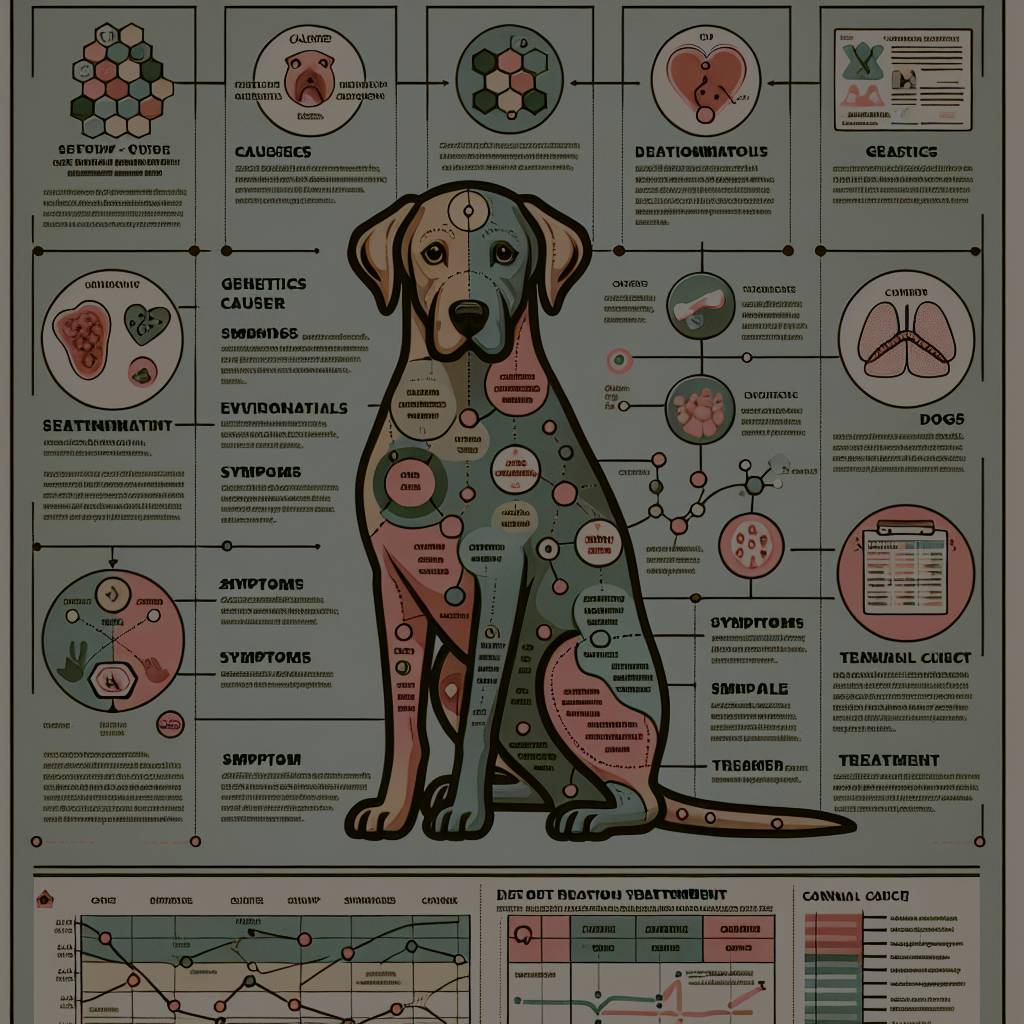
Cancer is a devastating disease that affects not only humans but also our furry friends. Canine cancer is unfortunately common, with around 1 in 3 dogs being diagnosed with some form of cancer in their lifetime. Understanding the causes, symptoms, and treatment options for canine cancer is crucial for early detection and effective management. In this article, we will delve into the causes and risk factors associated with canine cancer, as well as how to recognize and treat this disease.
Understanding Canine Cancer: Causes and Risk Factors
Canine cancer, like human cancer, is a result of abnormal cell growth. These cells can form tumors, which may be cancerous (malignant) or non-cancerous (benign). While the exact causes of cancer in dogs are still being studied, there are several known risk factors that increase the likelihood of a dog developing cancer.
Genetics plays a significant role in canine cancer, with certain breeds being more predisposed to specific types of cancer. For example, Boxers have a higher risk of developing mast cell tumors, while Golden Retrievers are prone to lymphoma. Environmental factors such as exposure to certain chemicals, radiation, and second-hand smoke can also increase a dog’s risk of developing cancer. Age is another important factor, as older dogs are more susceptible to cancer due to a weakened immune system.
Recognizing and Treating Canine Cancer: Symptoms and Treatment Options
Early detection of canine cancer is crucial for a successful treatment outcome. Recognizing the symptoms and seeking veterinary assistance at the earliest signs can make a significant difference. Common symptoms of canine cancer include unexplained weight loss, loss of appetite, lumps or swelling on the body, chronic coughing or difficulty breathing, and persistent lameness or stiffness. Other signs may include changes in behavior, abnormal bleeding, and sores that do not heal.
The treatment options for canine cancer depend on various factors such as the type, location, and stage of the disease. In some cases, surgical removal of tumors may be possible. Chemotherapy, radiation therapy, and immunotherapy are also commonly used to treat canine cancer. These treatments aim to shrink or eliminate tumors, slow the progression of the disease, and alleviate symptoms. It is important to note that each dog’s treatment plan will be tailored to their specific needs, and close collaboration with a veterinarian is essential throughout the process.
While canine cancer is a formidable disease, understanding its causes, recognizing the symptoms, and exploring the available treatment options provide hope for our beloved furry companions. Regular veterinary check-ups, along with a vigilant eye for any changes in behavior or physical appearance, can greatly improve the chances of early detection. By staying informed and proactive, we can work towards giving our dogs the best chance at a long, healthy life. Remember, your veterinarian is your best resource for any concerns or questions regarding your dog’s health.
Absolutely! Here’s a “You might be interested in” paragraph with embedded links to relevant Wikipedia articles: — Speaking of canine health, you might be interested in learning more about different types of canine cancers such as lymphoma in animals and osteosarcoma. Understanding the veterinary medicine approaches to diagnosis and treatment can also be very enlightening. Additionally, exploring the role of cancer prevention might provide some valuable insights into how to reduce the risk of cancer in dogs. — This format incorporates natural language and seamlessly integrates the Wikipedia links, enhancing the value of the content for readers while keeping it SEO-friendly.










